BY
JANET STEINBERG
JANET STEINBERG
Meeting and
mingling with local folks brings new meaning to travel. Viewing a destination
through the eyes of the locals adds another
dimension to any trip. Through such enriching experiences I was able to
get a better knowledge and understanding about the food, religion, music,
clothing, and history in a myriad of countries. Take a peek at some of the
people, and their surroundings, that widened my horizons around the globe.
mingling with local folks brings new meaning to travel. Viewing a destination
through the eyes of the locals adds another
dimension to any trip. Through such enriching experiences I was able to
get a better knowledge and understanding about the food, religion, music,
clothing, and history in a myriad of countries. Take a peek at some of the
people, and their surroundings, that widened my horizons around the globe.
Kalimera! (Good morning) was my greeting from
this adorable man in Mykonos Greece. My reply of Efharisto (Thank
you) and my best smile made us instant best friends. And without either
of us able to converse verbally, we managed to communicate a bit about his
beautiful whitewashed island. From my charismatic new best friend (whose
name I do not even know) I learned where to go for the best coffee, honey-drenched
baklava and ouzo (an anise-flavored
aperitif widely consumed in Greece).
this adorable man in Mykonos Greece. My reply of Efharisto (Thank
you) and my best smile made us instant best friends. And without either
of us able to converse verbally, we managed to communicate a bit about his
beautiful whitewashed island. From my charismatic new best friend (whose
name I do not even know) I learned where to go for the best coffee, honey-drenched
baklava and ouzo (an anise-flavored
aperitif widely consumed in Greece).
 |
| CHARISMATIC GREEK GENTLEMAN IN MYKONOS |
Olá (hello), the only Portuguese word I
brought with me to the jungle-draped,
Amazon River city of Alter Do Chao, Brazil, was enough to get the hard-working
lady at the Manioc Flour House to look up and smile at me. From that
moment on, I had a friend. With sign language and hand gestures, she
walked me around her workplace and did her best to explain how they process the
manioc root into flour. Needless to say, at the end of her tour I
graciously declined her offer for me to taste the fly-attracting products made
from the manioc flour.
brought with me to the jungle-draped,
Amazon River city of Alter Do Chao, Brazil, was enough to get the hard-working
lady at the Manioc Flour House to look up and smile at me. From that
moment on, I had a friend. With sign language and hand gestures, she
walked me around her workplace and did her best to explain how they process the
manioc root into flour. Needless to say, at the end of her tour I
graciously declined her offer for me to taste the fly-attracting products made
from the manioc flour.
 |
| PRIMITIVE PROCESSING AT MANIOC FLOUR HOUSE |
A true
Hungarian Rhapsody played out for me in Budapest, Hungary at Gundel Restaurant
where I met Gyorgy Lakatos, the leader of the restaurant’s Gypsy Band.
From Gyorgy,I not only learned the history of the exquisite mansion/restaurant
founded in City Park (Varosliget ) in 1894,
but I also learned about, and devoured, the refined versions of traditional
Hungarian dishes. My Gundel dinner began with a cup of traditional gulyas (goulash)
soup followed by the warm Hungarian-style goose liver (libamajszeletek).
The next course was pike (fogas,) indigenous to Hungary’s Lake Balaton.
That splendid dinner was washed down with Gundel’s own Bull’s Blood wine,
and topped off with palacsinta, the thin crepe-like pancake filled with
homemade jams and/or nuts.
Hungarian Rhapsody played out for me in Budapest, Hungary at Gundel Restaurant
where I met Gyorgy Lakatos, the leader of the restaurant’s Gypsy Band.
From Gyorgy,I not only learned the history of the exquisite mansion/restaurant
founded in City Park (Varosliget ) in 1894,
but I also learned about, and devoured, the refined versions of traditional
Hungarian dishes. My Gundel dinner began with a cup of traditional gulyas (goulash)
soup followed by the warm Hungarian-style goose liver (libamajszeletek).
The next course was pike (fogas,) indigenous to Hungary’s Lake Balaton.
That splendid dinner was washed down with Gundel’s own Bull’s Blood wine,
and topped off with palacsinta, the thin crepe-like pancake filled with
homemade jams and/or nuts.
 |
| GYORGY LAKATOS, THE LEADER OF GUNDEL’S GYPSY BAND |
Of course, I
can’t speak Portuguese and she didn’t speak a word of English, but when I went
up to the lovely lady in the crisp white cotton outfit and said ‘You’re a mulher
bonita’ (pretty woman) she was all smiles…Just
like the rest of the Brazilians I came into contact with in Salvador da
Bahia. Whether in Salvador’s lower city at the Mercado Modelo
(market) or in the upper Old Town, friendly locals advised me to see the gilded
San Francisco Church, to have a drink in the cloister of the Convento do
Carmo (now a hotel), to stop in at the Fundacion Casa de Jorge Amado, a
blue colonial structure at Praca de Pelourinho (Pillory Square,)
dedicated to one of Brazil’s greatest authors, and to have a taste of moqueca,
the region’s renowned spicy seafood stew that Casa da Gamboa has been
serving up for years.
can’t speak Portuguese and she didn’t speak a word of English, but when I went
up to the lovely lady in the crisp white cotton outfit and said ‘You’re a mulher
bonita’ (pretty woman) she was all smiles…Just
like the rest of the Brazilians I came into contact with in Salvador da
Bahia. Whether in Salvador’s lower city at the Mercado Modelo
(market) or in the upper Old Town, friendly locals advised me to see the gilded
San Francisco Church, to have a drink in the cloister of the Convento do
Carmo (now a hotel), to stop in at the Fundacion Casa de Jorge Amado, a
blue colonial structure at Praca de Pelourinho (Pillory Square,)
dedicated to one of Brazil’s greatest authors, and to have a taste of moqueca,
the region’s renowned spicy seafood stew that Casa da Gamboa has been
serving up for years.
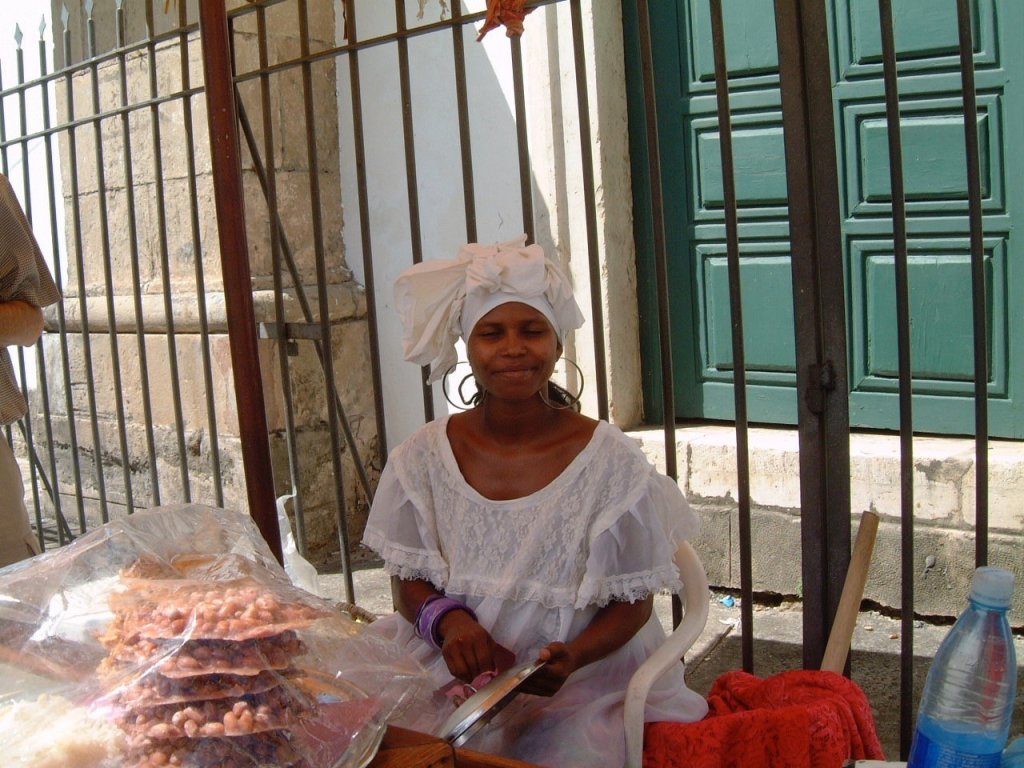 |
| MULHER BONITA (PRETTY WOMAN) IN SALVADOR DA BAHIA |
Fàilte
gu na h-Alba
(Welcome to Scotland). The handsome mustachioed bagpiper, decked out in
his perky plaid kilt welcomed my husband and me to the Port of Inverness.
Before bursting into a tune on his pipes, the gentleman told us that the nearby
village of Drumnadrochit
was purportedly the home of “Nessie”, the mythical Loch Ness Monster.
gu na h-Alba
(Welcome to Scotland). The handsome mustachioed bagpiper, decked out in
his perky plaid kilt welcomed my husband and me to the Port of Inverness.
Before bursting into a tune on his pipes, the gentleman told us that the nearby
village of Drumnadrochit
was purportedly the home of “Nessie”, the mythical Loch Ness Monster.
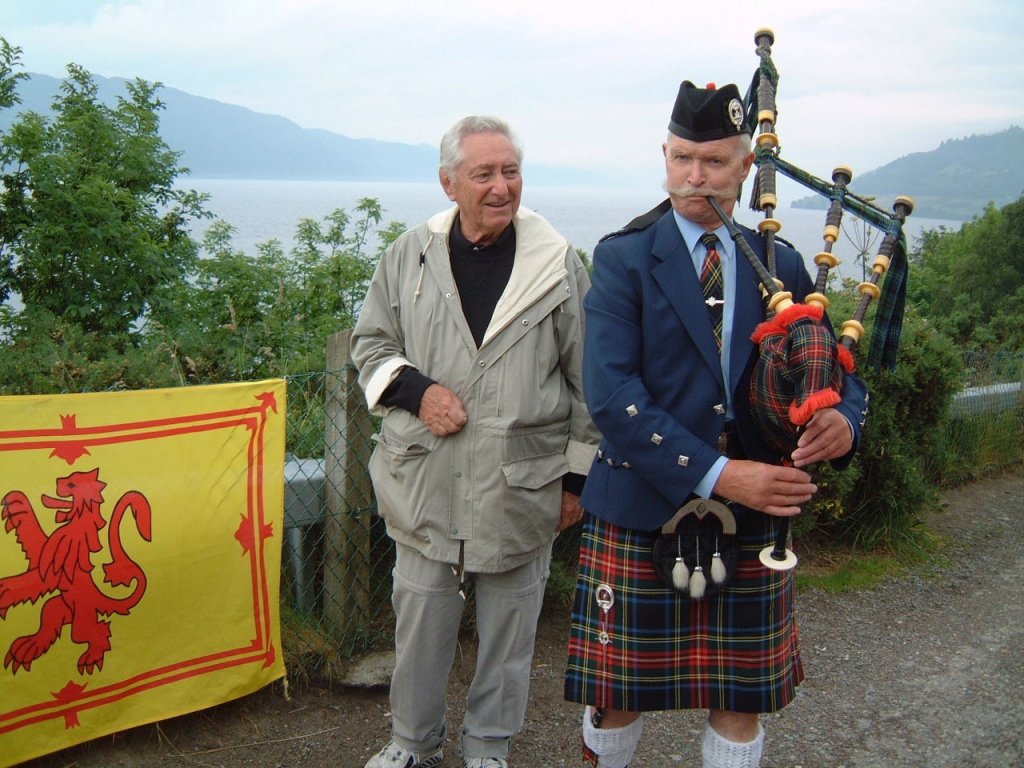 |
| SCOTSMAN PIPES A TUNE AND TALKS ABOUT “NESSIE” |
It is said
that the notorious “Nessie” was first sighted in the 6th century but
attracted increasing attention after questionable photographs of her were
supposedly taken in the 1930s. Although this submarine celebrity is
a heyday for hoaxers, “Nessie” sightings are reported every
year. Serious scientists search for Scotland’s best-known inhabitant all
year long. Some claim that sonar scans indicate “Nessie” might be a
plesiosaur. Others say it might be a giant eel and some credit her
existence to too much Scottish whisky. We never spotted “Nessie”, but in
Drumnadrochit we did manage to find a small lake with a larger than life model
of the monster.
that the notorious “Nessie” was first sighted in the 6th century but
attracted increasing attention after questionable photographs of her were
supposedly taken in the 1930s. Although this submarine celebrity is
a heyday for hoaxers, “Nessie” sightings are reported every
year. Serious scientists search for Scotland’s best-known inhabitant all
year long. Some claim that sonar scans indicate “Nessie” might be a
plesiosaur. Others say it might be a giant eel and some credit her
existence to too much Scottish whisky. We never spotted “Nessie”, but in
Drumnadrochit we did manage to find a small lake with a larger than life model
of the monster.
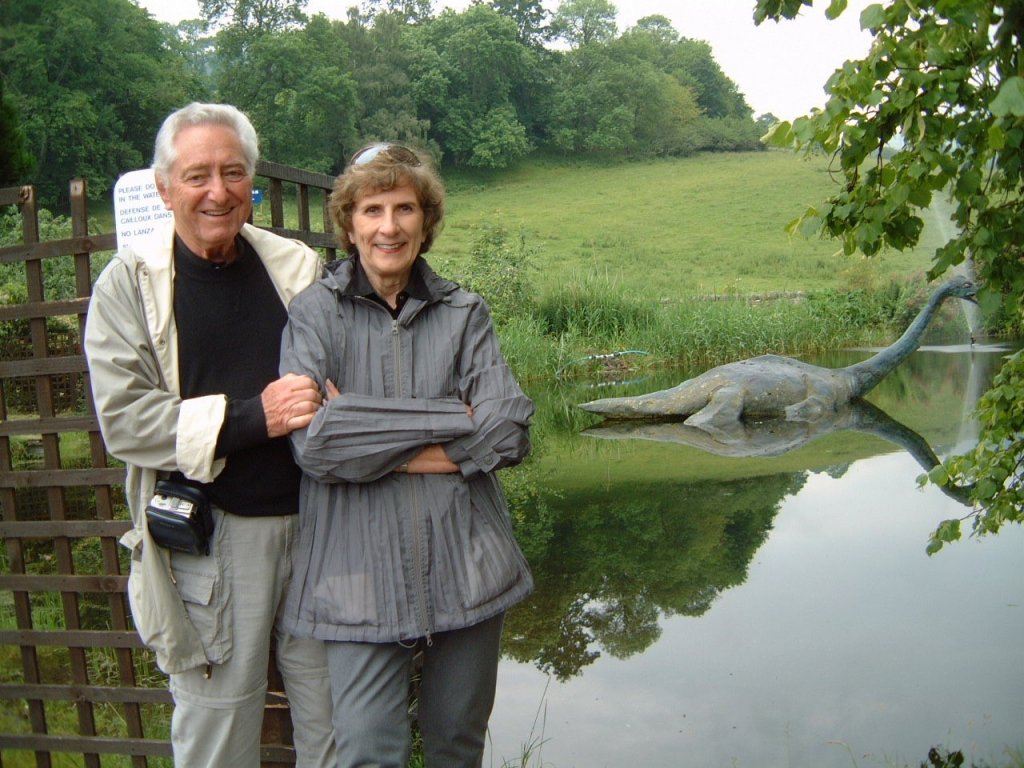 |
| BREAKING NEWS: WE FOUND THE LOCH NESS MONSTER. FAKE NEWS!!! |
In the
colorful La Boca barrio (neighborhood) of Buenos Aires,
Argentina, tango dancers earn their living dancing in the streets with tourists
for a fun few minutes each. Fully dressed for the part, they swelter in
the South American sun, as do the mimes who also amuse the visitors in this fun
part of town. La Boca, once the home of Italian immigrants and fishermen
is now an artists’ community with corrugated tin and wood houses in a riotous
splash of color. Resembling something that Van Gogh might have done
during one of his manic phases, La Boca is the city’s most picturesque
place.
colorful La Boca barrio (neighborhood) of Buenos Aires,
Argentina, tango dancers earn their living dancing in the streets with tourists
for a fun few minutes each. Fully dressed for the part, they swelter in
the South American sun, as do the mimes who also amuse the visitors in this fun
part of town. La Boca, once the home of Italian immigrants and fishermen
is now an artists’ community with corrugated tin and wood houses in a riotous
splash of color. Resembling something that Van Gogh might have done
during one of his manic phases, La Boca is the city’s most picturesque
place.
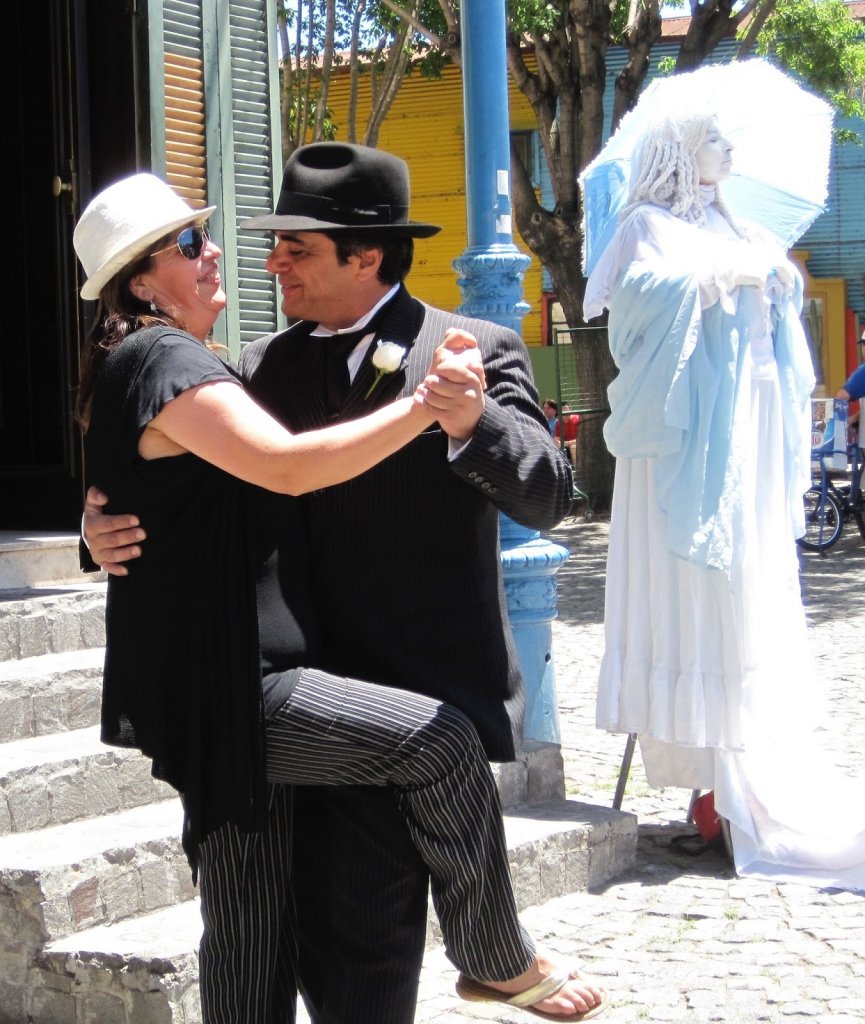 |
| TANGOING TOURIST IGNORED BY PROFESSIONAL MIME |
“¡Vamos a comer! “ (Let’s eat!). What could be a better way to make friends in Mexico
than joining them for an icy margarita and some tasty guacamole? Let me
tell you…there is only one thing better…and that is learning the secret of how
to make them for yourself once you return home. On a Silversea Spirit
cruise to Mexico, I opted for a Silversea
fun tour called “Salsa & Salsa Beach Break”. We were transferred to a
Beach Restaurant for a hand’s-on Mexican salsa cooking class where we learned
the steps of making authentic Mexican salsas and guacamole. We devoured our
concoctions with tortilla chips and washed them down with complimentary
margaritas. A couple of margaritas later, our guide showed us how to
step, sway, and get into the groove of Latin America’s most famous dance…The
Salsa. Following step-by step instructions, we were ready for the dance floor.
than joining them for an icy margarita and some tasty guacamole? Let me
tell you…there is only one thing better…and that is learning the secret of how
to make them for yourself once you return home. On a Silversea Spirit
cruise to Mexico, I opted for a Silversea
fun tour called “Salsa & Salsa Beach Break”. We were transferred to a
Beach Restaurant for a hand’s-on Mexican salsa cooking class where we learned
the steps of making authentic Mexican salsas and guacamole. We devoured our
concoctions with tortilla chips and washed them down with complimentary
margaritas. A couple of margaritas later, our guide showed us how to
step, sway, and get into the groove of Latin America’s most famous dance…The
Salsa. Following step-by step instructions, we were ready for the dance floor.
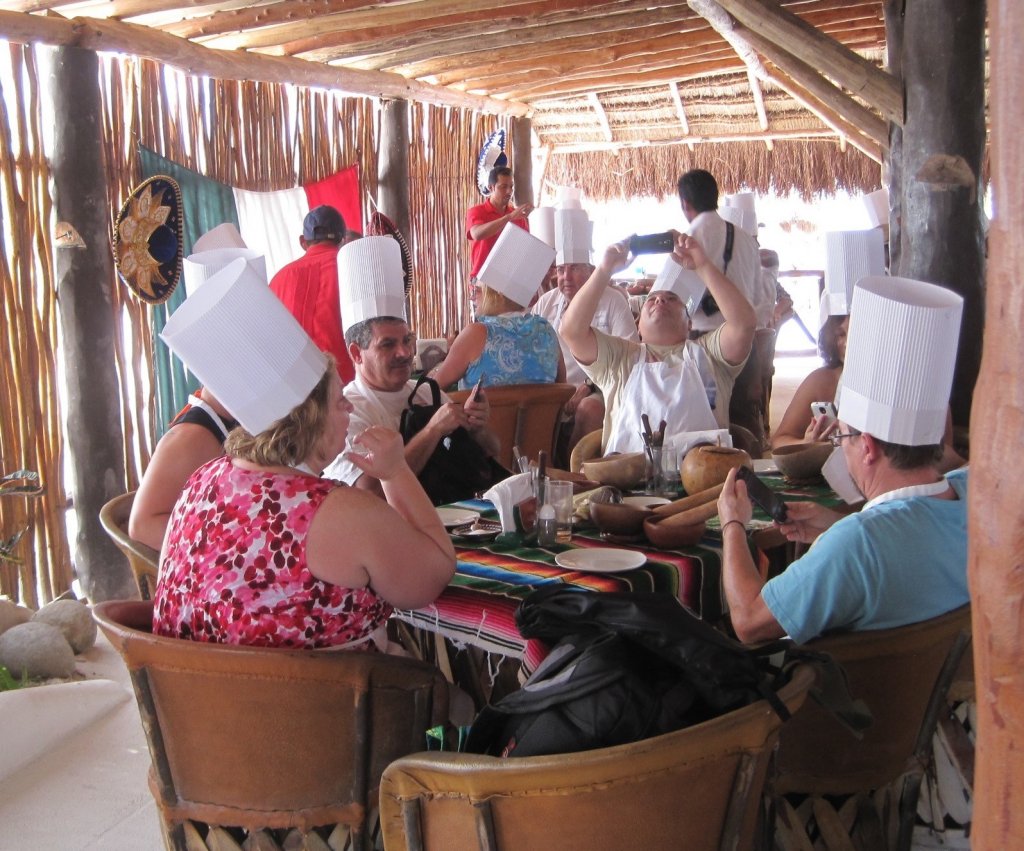 |
| LEARNING TO MAKE GUACAMOLE IN COSTA MAYA, MEXICO |
Exploring the
Cu Chi Tunnels site, with a local guide who had survived the conflict, helped
raise Vietnam’s bamboo curtain for me. Located approximately 25
miles northwest of Ho Chi Minh City, this amazing network of tunnels enabled me
to view the claustrophobic life experienced by Vietnamese villagers and
guerrillas in the subterranean passages in which they lived during the
war. This elaborate125 mile network of tunnels, spread beneath the ground
like a cobweb, was a chilling reminder of the struggle our soldiers encountered
fighting an invisible enemy. Sobering as it was, my tour of the Cu Chi
Tunnels will undoubtedly be one of the most memorable highlights of my trip to
Vietnam.
Cu Chi Tunnels site, with a local guide who had survived the conflict, helped
raise Vietnam’s bamboo curtain for me. Located approximately 25
miles northwest of Ho Chi Minh City, this amazing network of tunnels enabled me
to view the claustrophobic life experienced by Vietnamese villagers and
guerrillas in the subterranean passages in which they lived during the
war. This elaborate125 mile network of tunnels, spread beneath the ground
like a cobweb, was a chilling reminder of the struggle our soldiers encountered
fighting an invisible enemy. Sobering as it was, my tour of the Cu Chi
Tunnels will undoubtedly be one of the most memorable highlights of my trip to
Vietnam.
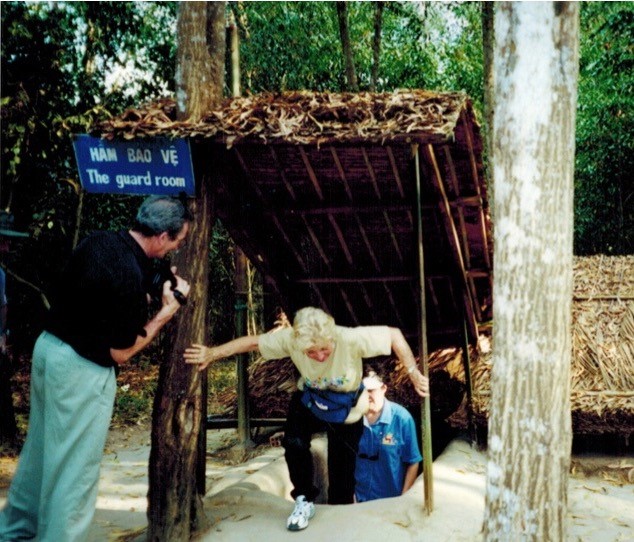 |
| TOURISTS EXPERIENCE THE CU CHI TUNNELS |
TEXT AND
PHOTOS by JANET STEINBERG
PHOTOS by JANET STEINBERG
JANET
STEINBERG is the winner of 43 national Travel Writer Awards. She is also a
Travel Consultant with The Travel Authority in Cincinnati, Ohio
STEINBERG is the winner of 43 national Travel Writer Awards. She is also a
Travel Consultant with The Travel Authority in Cincinnati, Ohio
